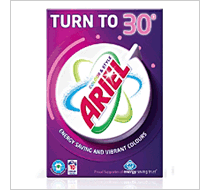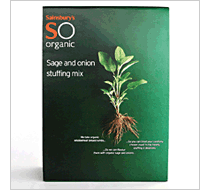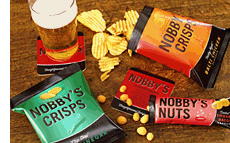Ideas driven design
An emotional connection
September 2008
 Mike Staniford
Mike Staniford
Executive Creative Director We live in what is described as a five-second world and the choice for consumers is getting bigger and broader. Today's consumer is better informed, more sceptical, less loyal, and harder to read. Brands that don't touch consumers in a personal way are on shaky ground and any brand that resembles the one next to it is taking the first step to becoming a commodity. Too many brands follow the same rule book and simply become formulaic. Formulas don't deal with emotional need. 
So this is where ideas driven design comes in. Design that uses an idea to make an emotional connection between a product or a service and its intended audiences. A connection that involves a deeper participation on behalf of the consumer. And brands after all are about participation - well the successful ones are at least.
When U.K. laundry detergent brand Ariel launched Ariel Cool Clean, it was the second in a series of innovative brand-led approaches to on-pack promotion developed by Landor. The goal was to advocate Ariel's effectiveness at 30ºC and the inherent energy cost-savings to consumers by washing at a lower temperature.
One of Landor's challenges with Ariel Cool Clean was to overcome the perception that lower temperatures have a reduced cleaning power.

Our idea was to make the promotion the pack design. The "Turn to 30°C" message is reinforced visually by placing the Ariel logo on a washing machine dial that mirrors the act of physically turning the dial down. It maintains Ariel brand equities while pushing the boundaries of promotional packaging. Following the launch, Ariel became market leader.
The best brands do more than capture attention and make the audience linger. They prolong the encounter, compelling the consumer not only to notice, but also to remember. And that is exactly what you want, to be remembered.
Ideas start with a good insight. In other words, what is the clarified thought or reason that we have uncovered from our understanding of consumers and the market? And then, how do we develop an idea that delivers to this insight in an emotional and compelling way?
Sainsbury's Organic, designed by Williams Murray Hamm in London, is also a good example of this. We all know that organic produce is moving into the psychology of mainstream shopping. However, how do consumers know if something is truly organic? The idea expressed by Sainsbury's Organic is "soil, roots and all," a beautifully executed example of bringing the idea to life on pack. Its sales soared with a massive return on investment for Sainsbury's and the brand won a number of design awards at the same time. Great creativity and commercial success are not mutually exclusive!

Brands are also about storytelling. Brands with good ideas tell engaging stories and invite you in; they are interactive. An idea has to be seen and interpreted, and this draws the audience closer to the proposition. Ideas challenge the intellectual curiosity. They give reward.
Importantly, these brands become memorable and therefore differentiate. And the idea is what differentiates them. Ideas can take the form of humour - everybody's warm to humour, we all love a good joke. Take Nobby's Nuts as an example. Designed by Landor's London office, Nobby's has developed a complete persona that resonates in every piece of communication: it's called "Nobby's World."
Aimed unashamedly at blokes, Nobby's self-styled humour underpins all brand activity, from the packaging itself (note the symbols denoting flavour variants standing blokishly erect) through to the point of sale and the "essential trivia, life lessons for the modern bloke" on the back of the pack. Even the pub contests feature arm-wrestling competitions with a Swedish blonde, and what most punters didn't know was that she was actually an arm-wrestling champion! Taking the idea of a simple quality with a no-nonsense attitude and a wicked sense of humour - the equivalent of male banter - meant Nobby's could start to develop a unique point of view.

When a brand develops a big idea, it translates across all forms of communication and starts to own a place in people's minds. It also sets you apart from the category norm and in the case of Nobby's drives considerable increase in market share.
Sadly, one of the challenges comes in convincing the custodians of the brands we love to be brave and not play at the margins. Every day an agency somewhere is being briefed by a client who wants something revolutionary, something that really breaks the mould.
And that is when it gets tough because something that is very different is hard to embrace. New ideas scare people and unfortunately brand owners are often too apprehensive to put them into research and listen to what consumers have to say. If they do make it to research, they often fail simply because they don't fit within the consumers current frame of reference.
But the fact is that great ideas are ownable and protectable. They not only drive differentiation but also have the ability to drive up sales. They become famous, they develop a personality, and they give the brand a unique tone of voice. Ideas allow a brand to shift away from the expected to the unexpected.
I would urge all brand owners to find that point of difference - to demand their agencies to seek out that differentiating idea, and not just the new layout or TVC! In a five-second world, if you stand for nothing, you usually fall for everything.
© 2008 Retail Media Pty Ltd. All rights reserved.
This article was first published in
Retail World (1 September 2008).